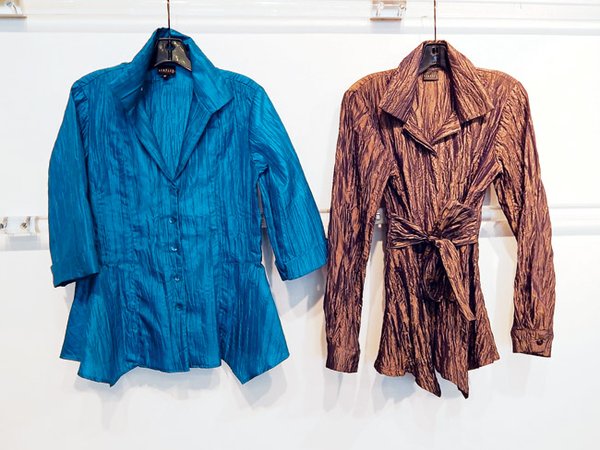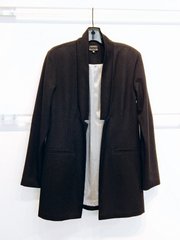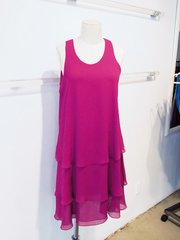STAPLES USA
Staples USA: Los Angeles Label Has Been Focused on Domestic Production for More Than Three Decades
When Staples USA started manufacturing its line of women’s clothing in Los Angeles in 1980, it wasn’t considered that odd to cut and sew your entire collection in a local factory. At that time, 76 percent of the clothes sold in U.S. stores came from domestic apparel factories.
Thirty-four years later, Staples USA is still making its clothes in Los Angeles even though 97.5 percent of garments sold in the United States come from overseas.
“The reason we make clothes here is we don’t want to buy clothes that come from 6,000 miles away. We have been tempted many times, but it takes a lot of [energy] for a boat to cross the ocean,” said Pat Stimac, one of the label’s founding partners who joined forces to start a clothing line that is always stylish, fashionable and supports sustainability.
Staples’ long-time designer, Rosemary Brantley, a graduate of Parsons The New School of Design and chair of the fashion department at Otis School of Art and Design in Los Angeles, says working with local apparel factories helps the updated womenswear label stay on top of trends. “Because we are the kind of company that makes fashion, we can turn things around faster if they are made here,” said the designer, who has been a partner with the brand since Stimac joined forces with Gary Brownstein to launch the apparel line.
Brantley formulates her looks to match the sewing skills of local factories and to distinguish the line from other labels made overseas. “If you are going to manufacture in America, you shouldn’t make anything basic that competes with China,” she said. “We try to keep the clothes in our line about great new shapes. You have to be clever about what you make in America to make it successful and competitive.”
Brantley said she designs powerful but simple clothes that have a unique silhouette that can be worn several ways. A crinkled blouse may have a tie in the back that also can be belted in the front.
Longer hemlines have buttons and loops to help make the dress convert into a shorter look. Jackets can be fastened in the back to make the silhouette more slimming.
Details are another strong point. Jacket buttons often are covered with fabric. Some dresses are reversible with a solid fabric on the inside and a print on the outside. The dress label is loosely sewn at the edge of the neckline so it flips over. Other dresses may have a keyhole look in the back and a rounded neck in the front that can be reversed for a varied silhouette so the keyhole is in the front and the rounded neck in the back.
Brantley likes her designs to be flexible and to fit a wide variety of body shapes. “With our clothes you can dress someone who is small or someone who is tall. I’m 5-foot-9½, and I can wear our clothes, but I have a sister and a niece who are bigger, and I have them in mind when I design pieces that you can mix and match.”
At the time the label launched in 1980, Brantley was working three days a week at Otis’ newly formed fashion school, which initially had three instructors and 17 students. The rest of her time was devoted to the Staples USA line, which started with seven dresses.
“We did great. After seven dresses, we did 15 dresses and then sportswear. It just got bigger,” Brantley said.
These days, the company is incorporating more-sustainable fabrics into its line. Brantley likes working with double knits, rayon knits and novelty knits. She also likes to coordinate fabrics so a stripe, a dot and tweed can be mixed and matched. “If you can make designs that are simple but powerful,” Brantley said, “that is the best thing and the hardest thing to do.”
The Staples USA line is sold primarily to specialty stores, with wholesale prices ranging from $29 to $139. For more information, contact Arlene Henry Sales at (213) 622-6162.




























